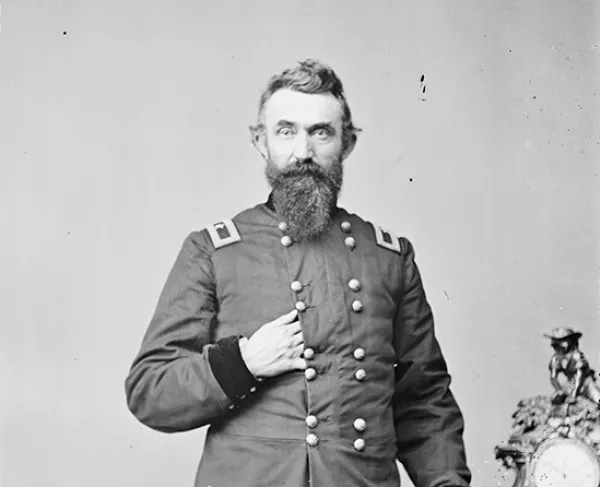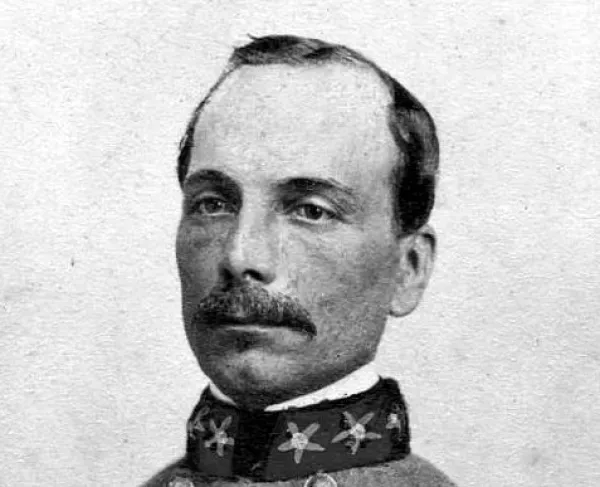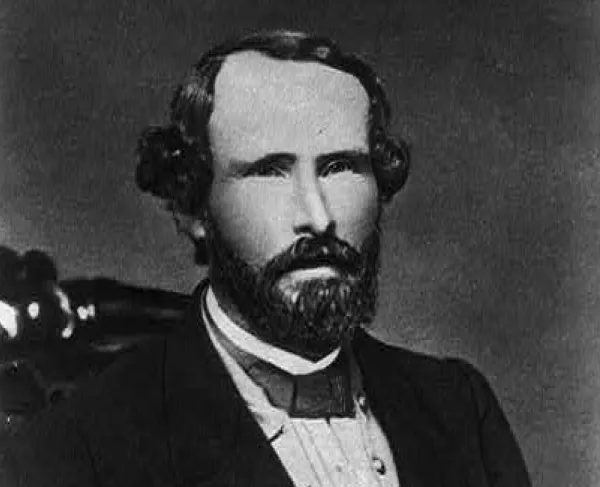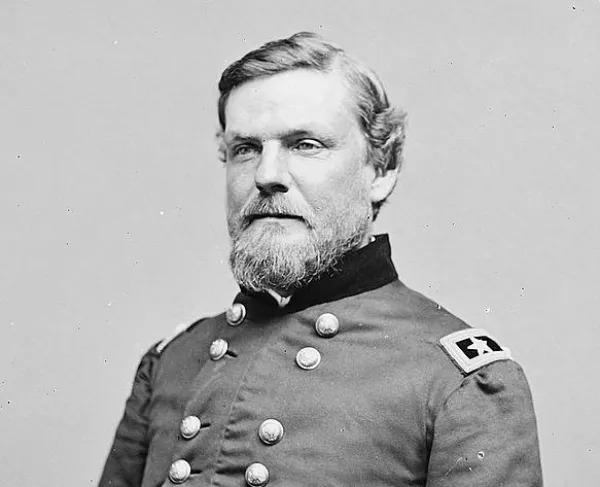Nathan Kimball

Nathan Kimball received his initial education at DePauw University from 1839 to 1841. After graduating, he began to study medicine, and started what would become a very successful practice. During the Mexican-American War, Kimball served as a captain of the 2nd Indiana Volunteers. During the Battle of Buena Vista, the 2nd Indiana fled in disorder, but Kimball was credited with rallying his own company, even though the rest of the regiment crumbled.
At the outbreak of the Civil War, he helped raise soldiers from Indiana to fight for the Union. Kimball was named colonel of the 14th Indiana on June 7, 1861, and led the regiment during the Battle of Cheat Mountain, in western Virginia. In March of 1862, Kimball led a brigade at the Battle of Kernstown, and temporarily led the division of General James Shields after Shields was wounded. While leading the division, he was able to launch a successful counter-attack against Confederate General Thomas “Stonewall” Jackson, and inflicted one of the few defeats against Jackson. For his actions, Kimball was promoted to brigadier general on April 16, 1862. At the Battle of Antietam, Kimball led the 1st Brigade of General French’s Division in desperate fighting at the Sunken Road. Kimball was eventually able to take the road, but his brigade suffered; over six hundred men had been killed or wounded. He went on to command his brigade, now known as the “Gibraltar Brigade” for its ability to stand fast even when under intense enemy fire, through the Battle of Fredericksburg. During an assault on Marye’s Heights, Kimball was seriously wounded and forced to rest through the winter and spring of 1863.
After Kimball recovered from his wounds, he was placed in command of a division in the XVI Corps in the Western Theatre. He commanded his division during the Siege of Vicksburg, and was then moved to the VII Corps under General William T. Sherman. He participated in the Atlanta Campaign, as a brigade commander during the Battle of Peachtree Creek, and then as a division commander of the IV Corps. He was moved back to Indiana for a short period in order to help suppress a disloyal group known as the Knights of the Golden Circle, but returned to duty to take part in the battles of Franklin and Nashville. As a result of his actions, he received a brevet promotion to major general in 1865 and mustered out of the army at the end of the war.
After the war, he served as a state treasurer in Indiana before taking several political appointments in the Utah Territory.





